The latest works 10
Caution: There are animations in this page.
Access since January 5, 2006
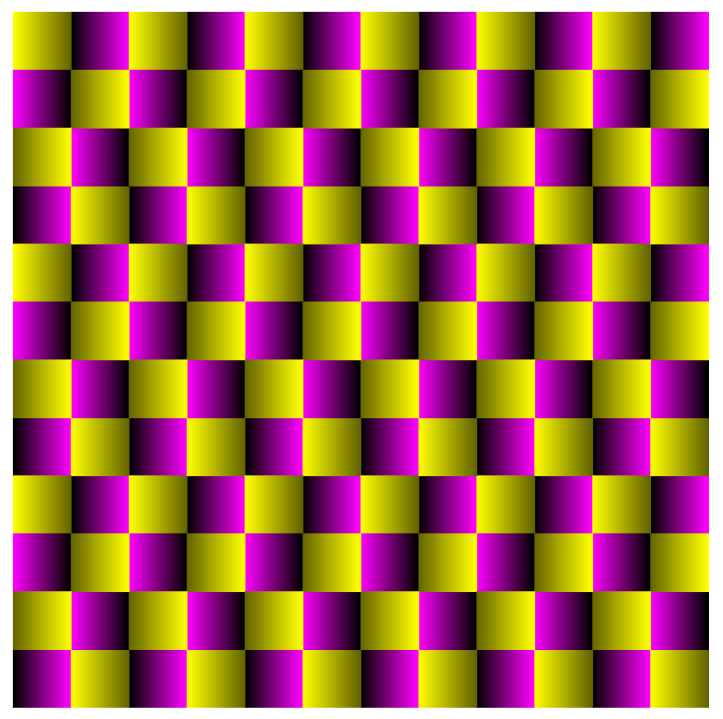
"Digital bumps"
The image appears to be bumpy and appears to move.
Copyright Akiyoshi .Kitaoka 2006 (February 11)
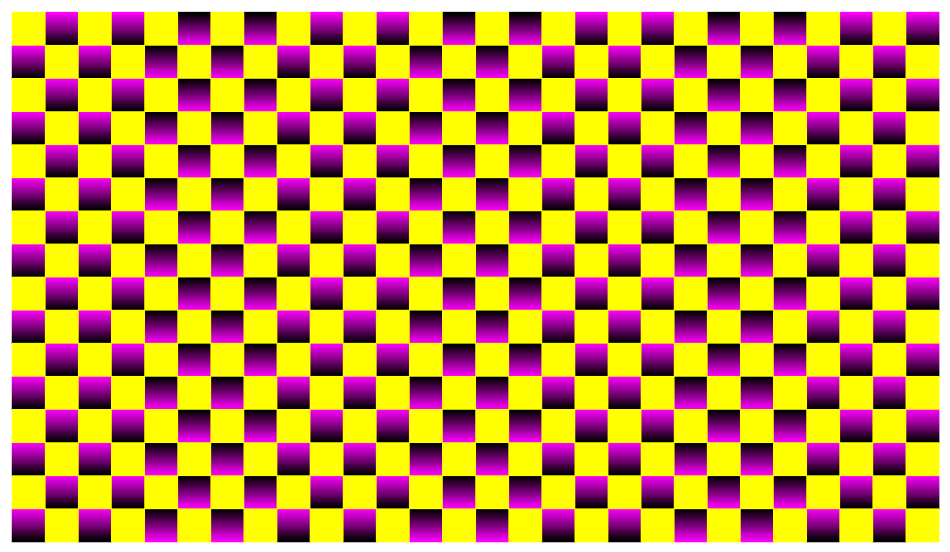
"Three streaks of falls"
The image appears to move.
Copyright Akiyoshi .Kitaoka 2006 (February 11)
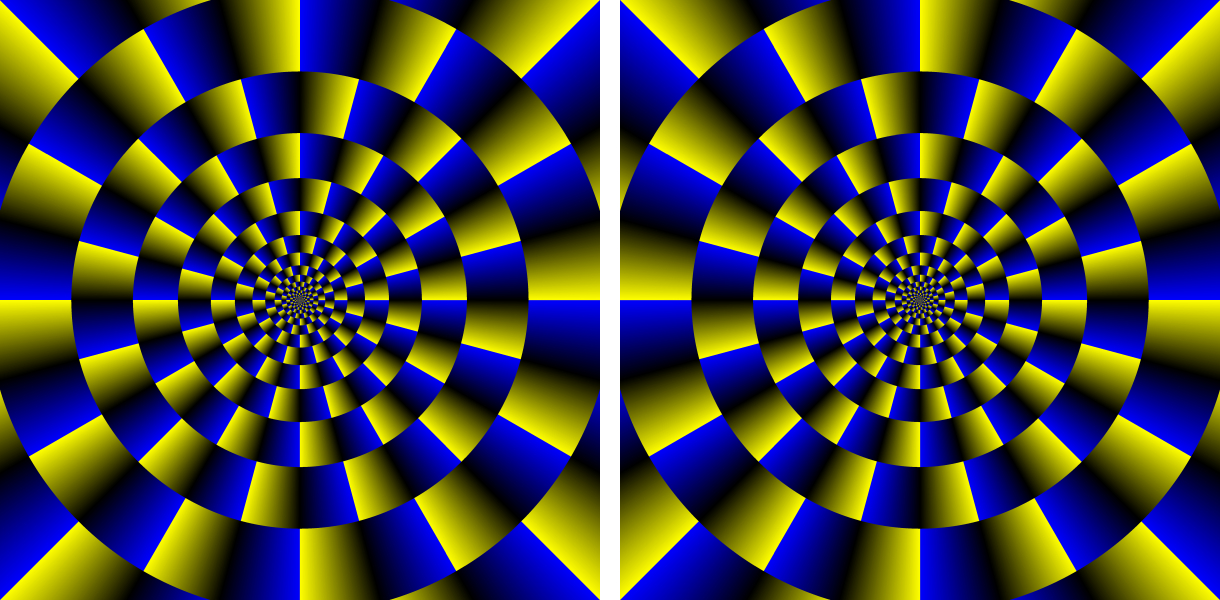
"Metalic time tunnels"
The left image appears to rotate counterclockwise while the right one clockwise. However, the reversal is observed when we watch this image by keeping blinking.
Copyright Akiyoshi .Kitaoka 2006 (February 10)
Warning: Do not keep blinking too frequently. Blink vibrates the retinas in the eye balls, which might possibly cause serious disorders, e.g. retinal detachment or hemorrhage of the fundus for those who have too strong nearsightedness, high blood pressure or diabetes.
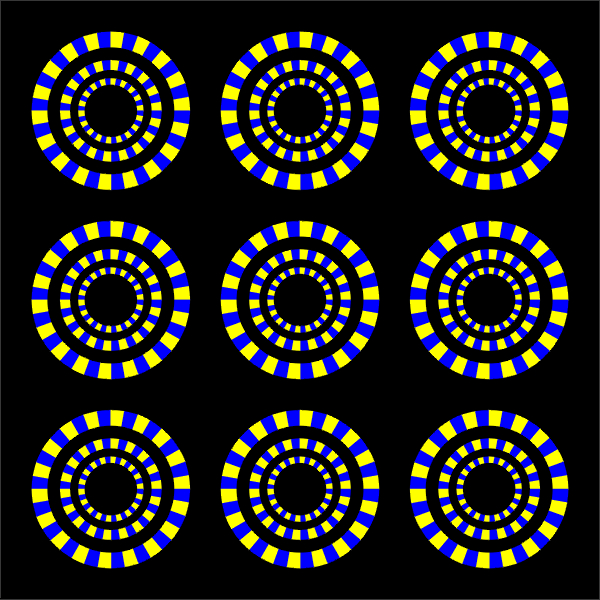
"Flickering rotating snakes"
The rings appear to rotate though only two images alternate actually.
Copyright Akiyoshi .Kitaoka 2006 (February 4)

"Blurred eye"
The yellow circle appears to expand.
Copyright Akiyoshi .Kitaoka 2006 (February 1)
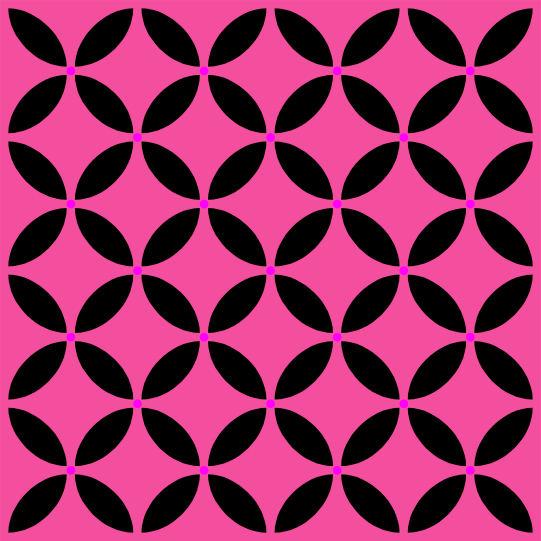
"Kunoichi"*
*Ninja ladies (Ninja are spies in the Sengoku and Edo eras (16th-19th century))
There are purple-red dots but observers cannot catch them in the central vision.
Copyright Akiyoshi .Kitaoka 2006 (January 30)
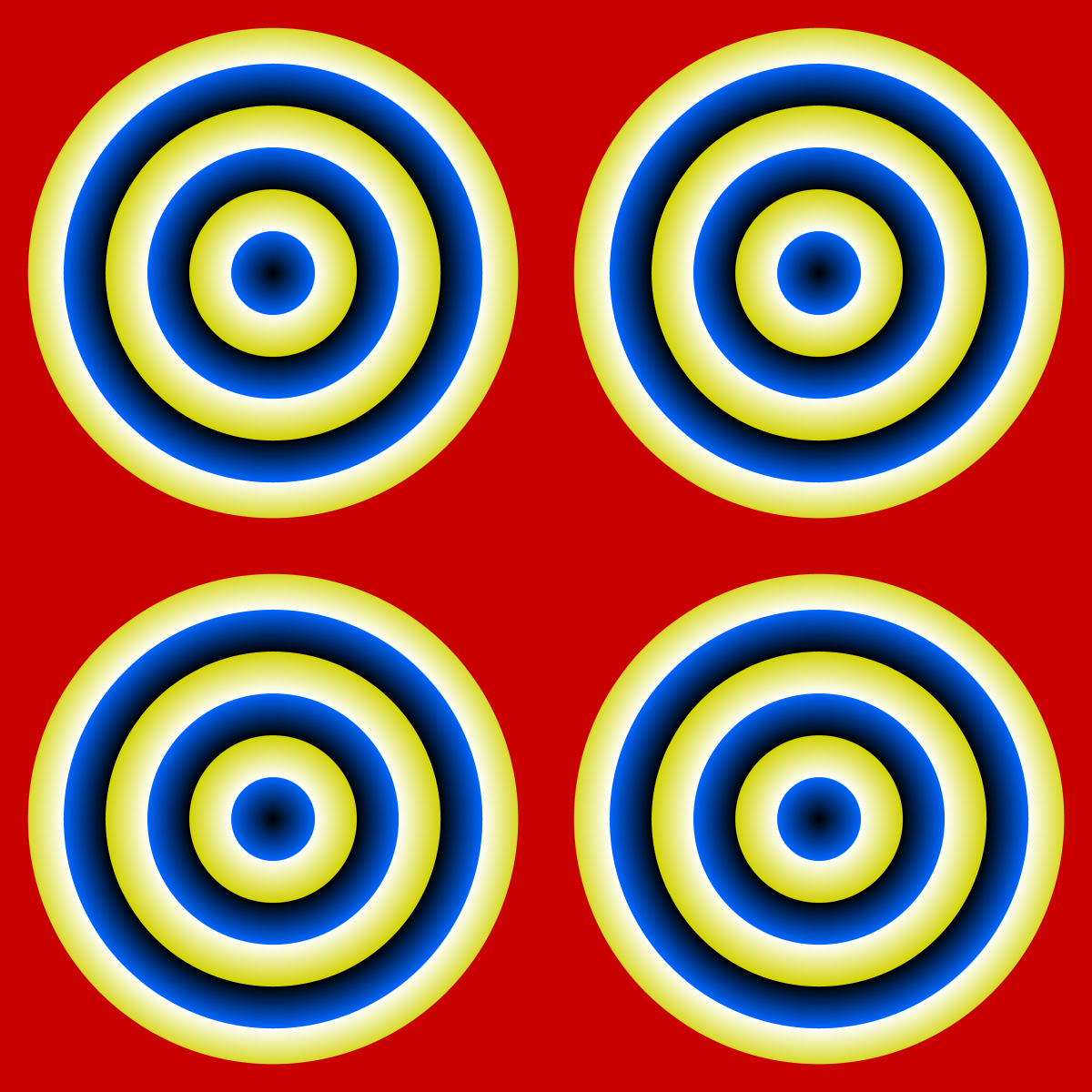
"Namahage"*
*kind of ghosts or devils in Akita, Japan
Bull's-eyes appear to expand.
Copyright Akiyoshi .Kitaoka 2006 (January 13)
Namahage (see the December corner)
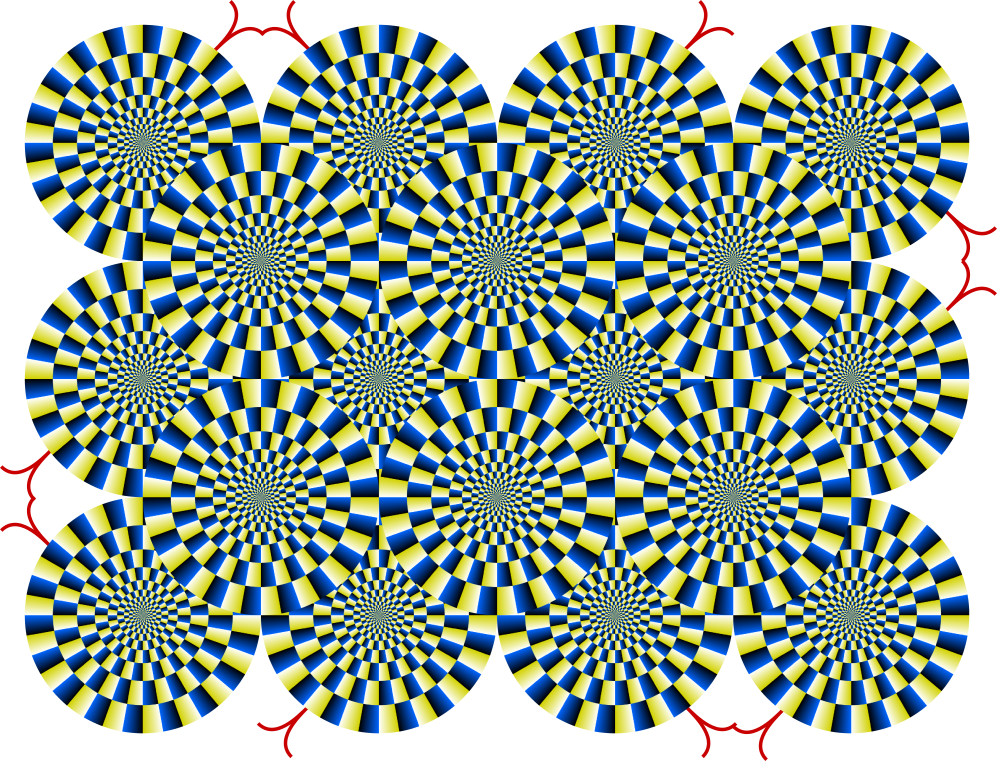
"Rotating snakes: gradation version"
Each ring appears to rotate slowly without effort. In this case, the direction of rotation is constant. When observers keep blinking, each ring appears to rotate quickly. In this case, the direction of rotation is not constant. Attention can change the direction.
Copyright Akiyoshi .Kitaoka 2006 (January 12)
Warning: Do not keep blinking too frequently. Blink vibrates the retinas in the eye balls, which might possibly cause serious disorders, e.g. retinal detachment or hemorrhage of the fundus for those who have too strong nearsightedness, high blood pressure or diabetes.
One of my colleagues suggested that the gradient version gives more illusion magnitude than the edge one. Then I have tried to make this work. Do you feel stronger illusion that the original? (I do not...)
This idea has been published in: Journal of Vision Volume 5, Number 11, Article 10, Pages 1055-1069
| Illusory motion from change over time in the response to
contrast and luminance Benjamin T. Backus Ipek Oruc http://journalofvision.org/5/11/10/ Ben's webpage --- Ben's laboratory |
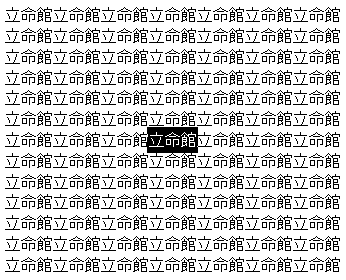
"Ritsumeikan jitter illusion"
![]() (Ritsumeikan) appears to jitter when the surround flips in contrast. Many
observers possibly do not see this illusion.
(Ritsumeikan) appears to jitter when the surround flips in contrast. Many
observers possibly do not see this illusion.
Copyright Akiyoshi .Kitaoka 2006 (January 11)
cf. visual jitter
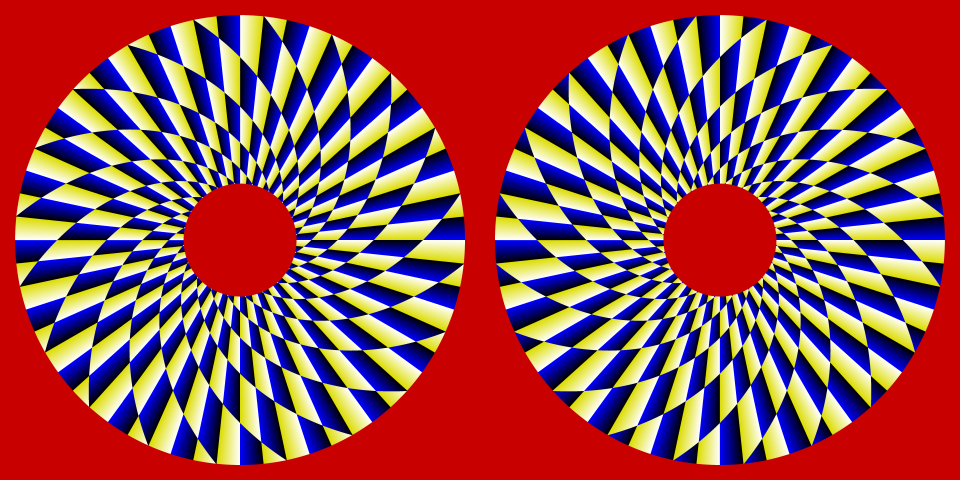
"Dizziness"
Both rings appear to rotate clockwise. Moreover, the left ring appears to contract while the right one appears to expand.
Copyright Akiyoshi .Kitaoka 2006 (January 8)
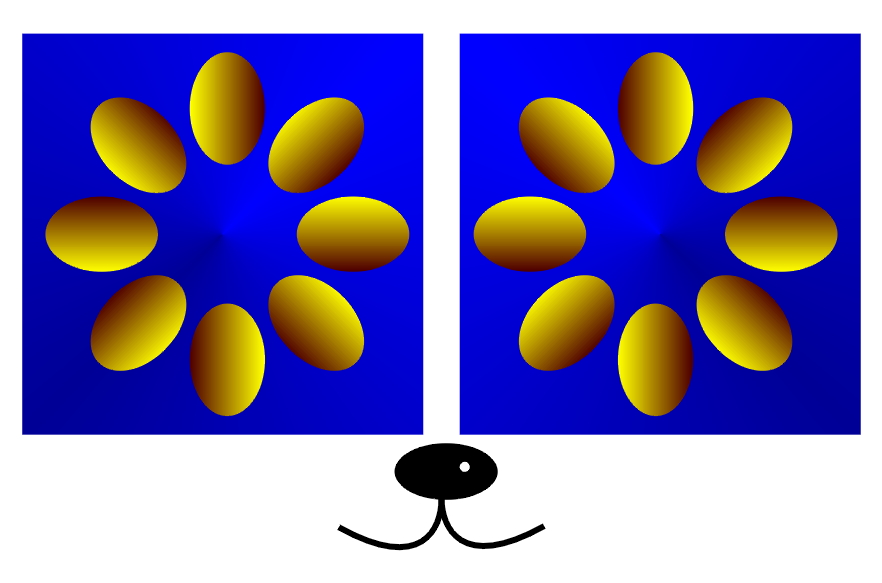
"Rotating eyes of a dog"
The left ring may appear to rotate clockwise while the right one counterclockwise. However, keeping blinking reverses these directions.
Copyright Akiyoshi .Kitaoka 2005 (November 6)
One of the works that were not adopted for New Year's card designs.
Warning: Do not keep blinking too frequently. Blink vibrates the retinas in the eye balls, which might possibly cause serious disorders, e.g. retinal detachment or hemorrhage of the fundus for those who have too strong nearsightedness, high blood pressure or diabetes.
9 The latest works (November 2005 - December 2005)
8 The latest works (October 2005 - October 2005)
7 The latest works (September 2005 - October 2005)
6 The latest works (June 2005 - August 2005)
5 The latest works (April 2005 - June 2005)
4 The latest works (March 2005 - April 2005)
3 The latest works (June 2004 - March 2005)
2 The latest works (April 2004 - June 2004)
1 The latest works (August 2003 - May 2004)
0 The latest works (June 2002 - July 2003)